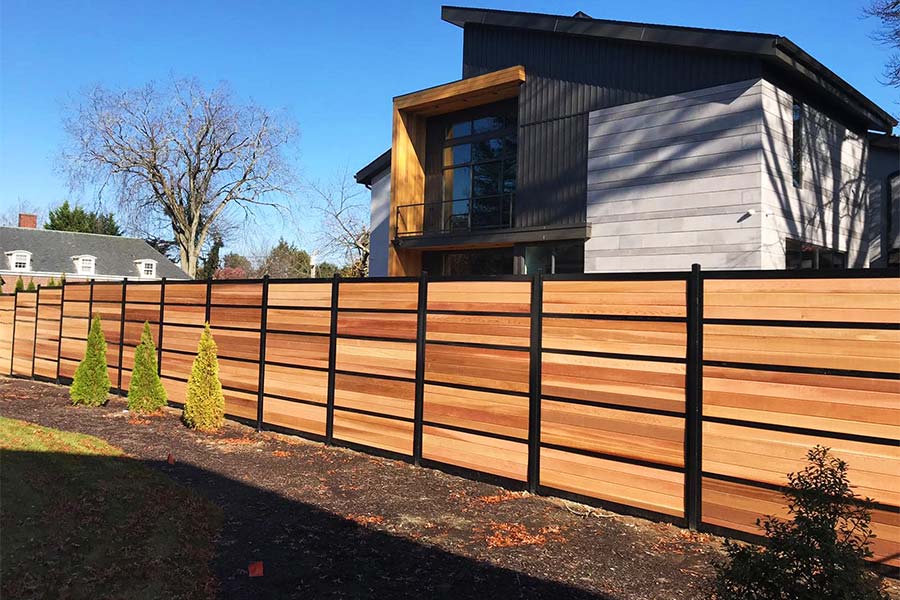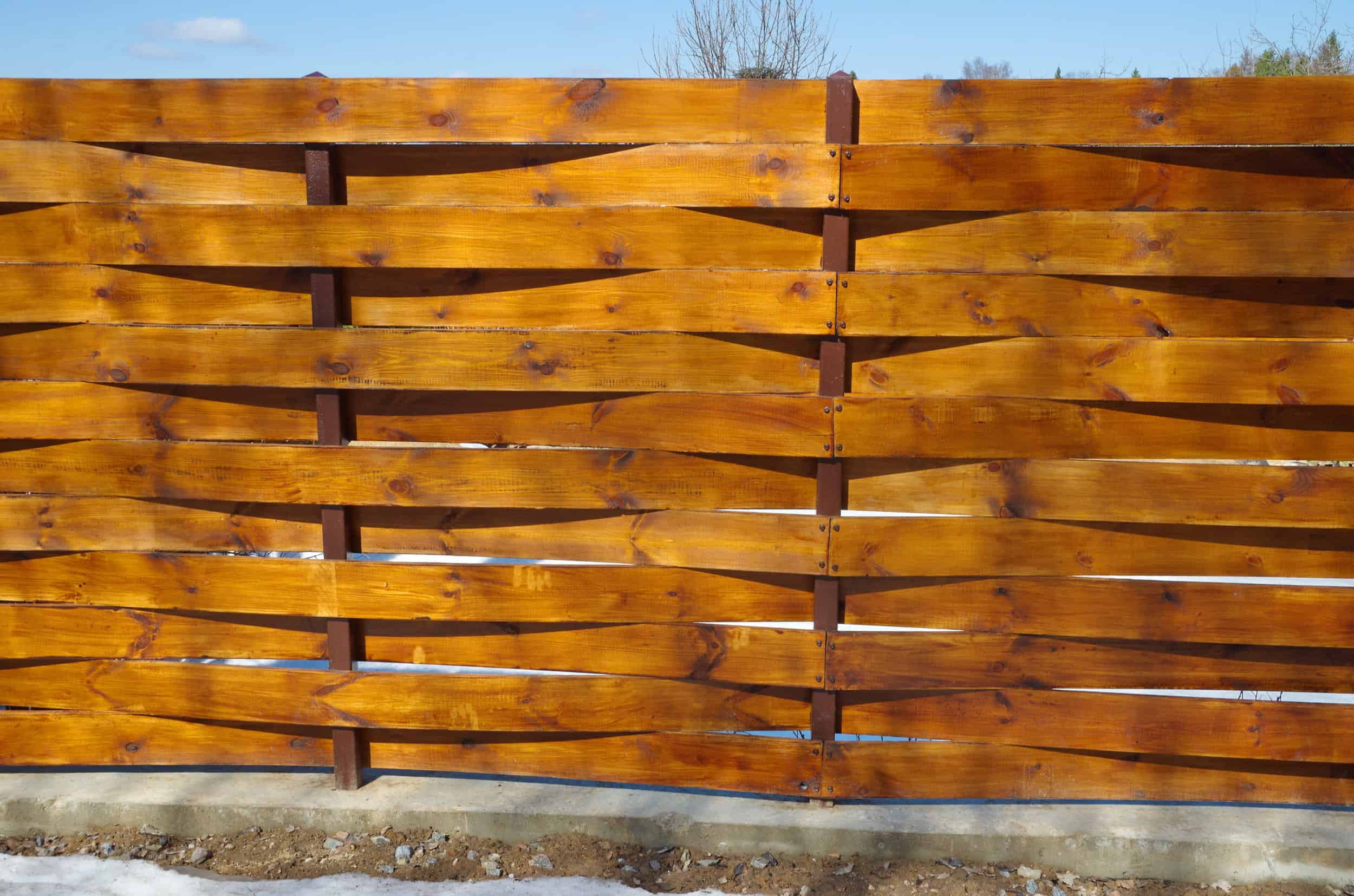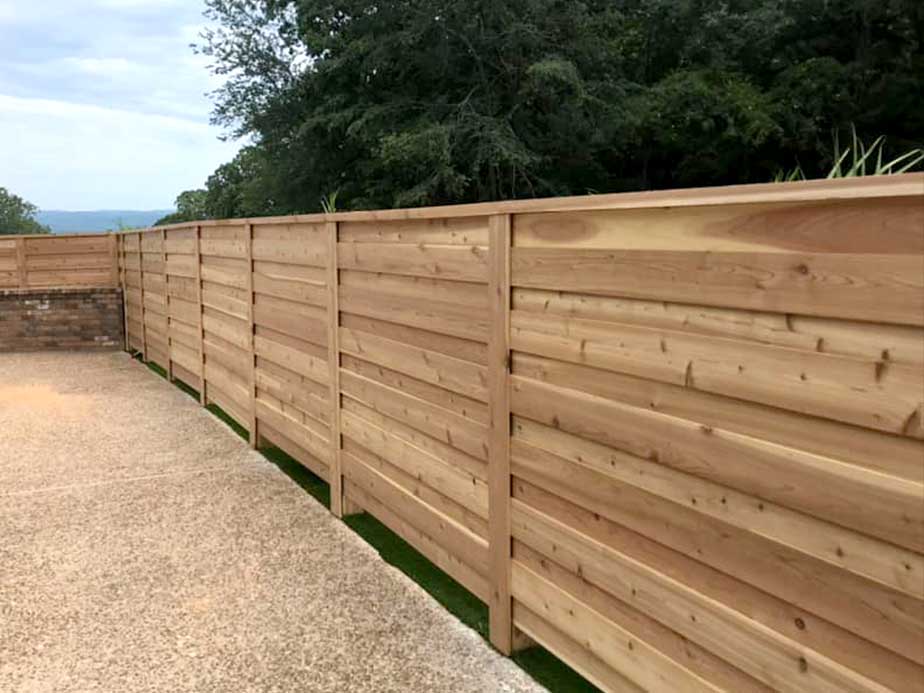All Categories
Featured
Your fencing is subjected to numerous climate condition year-round, and while it serves as an important part of your property, it's also among one of the most at risk aspects when it concerns weather-related damages. Harsh winds, hefty rainfall, severe temperatures, and UV direct exposure can all take a toll on your fence's integrity, resulting in tear and wear. There are a couple of actions you can take to protect your fencing and extend its lifespan. Right here are some reliable approaches to guard your fencing from weather-related damages.
Wooden Fencings: While wood is a timeless selection for fencing, it is vulnerable to rot, warping, and insect damage, specifically in locations with high dampness. Pressure-treated wood or cedar is more sturdy, but normal upkeep is important to maintain it in good problem. Vinyl Fence: Plastic is an outstanding choice for those seeking a low-maintenance and weather-resistant fencing. It's impervious to moisture, won't warp or crack in the warm, and withstands fading from UV rays. Steel Secure fencing: Wrought iron and aluminum are long lasting materials for secure fencing, but they need a rust-resistant coating to shield them from corrosion due to moisture. A protective layer or regular maintenance can protect against corrosion and expand the life of metal fencings. Composite Secure Fencing: Made from a mix of wood fibers and plastic, composite fences are extremely resistant to weather components, consisting of uv, heat, and moisture rays. This material uses a balance of sturdiness and aesthetic appeal. Picking a material matched to your environment will provide much better security for your surround the long-term.
Seal or Tarnish the Timber: Using a premium sealant or tarnish to your timber fence develops a water resistant obstacle that protects against wetness from entering the wood. It additionally aids secure the timber from UV rays, which can cause staining and drying out. Reapply Sealant Routinely: Gradually, the protective barrier of your sealer or discolor can put on down. Relying on your climate, it's an excellent concept to reapply each to two years to maintain the wood secured. This therapy will maintain the fencing's appearance, avoid rot, and lengthen its lifespan.
![]()
For additional protection, consider making use of wind-resistant mesh screens or panels in locations where wind is a significant worry. This additional layer can aid reduce the pressure that the wind exerts on your fence.
Inspect Drainage: Make sure that the ground around your fence inclines away from the articles. Proper drainage permits water to flow far from the fence, preventing wetness build-up. Install Water Drainage Equipments: In locations where drainage is a worry, consider including a French drain or gravel around the base of your fence messages to redirect water away from the structure. Good water drainage can protect against rot, rust, and various other types of weather-related degeneration.
![]()
![]()
Concrete Grounds: Establish fencing articles in concrete to prevent them from loosening up with time because of dirt disintegration or moving ground. Steel Braces: Adding steel dental braces to fence blog posts can offer extra strength and decrease the threat of leaning or damaging. Strengthening your articles makes sure that your fencing will stay in area, even throughout extreme weather.
For wood fencings, carefully clean the surface with a light cleaning agent to get rid of dirt and gunk. For plastic fencings, make use of a soft cloth and cleansing option to stop accumulation. For metal fencings, examine for rust and sand it off before using a fresh layer of paint. Final thought. Your fence is a vital feature of your residential or commercial property, and with the appropriate care, it can hold up against the obstacles postured by the weather. By selecting long lasting materials, carrying out normal upkeep, and enhancing powerlessness, you can secure your fencing from the elements and extend its life. Normal examinations, using protective finishes, and taking actions to regulate wetness and wind exposure will aid make sure that your fence stays strong, practical, and attractive for many years to come.
- Select Weather-Resistant Products. The materials you choose for your fence can have a significant influence on its capability to hold up against the elements. Various products are much better geared up to handle specific climate conditions. Here's a malfunction of just how various materials stand up against the weather condition:
Wooden Fencings: While wood is a timeless selection for fencing, it is vulnerable to rot, warping, and insect damage, specifically in locations with high dampness. Pressure-treated wood or cedar is more sturdy, but normal upkeep is important to maintain it in good problem. Vinyl Fence: Plastic is an outstanding choice for those seeking a low-maintenance and weather-resistant fencing. It's impervious to moisture, won't warp or crack in the warm, and withstands fading from UV rays. Steel Secure fencing: Wrought iron and aluminum are long lasting materials for secure fencing, but they need a rust-resistant coating to shield them from corrosion due to moisture. A protective layer or regular maintenance can protect against corrosion and expand the life of metal fencings. Composite Secure Fencing: Made from a mix of wood fibers and plastic, composite fences are extremely resistant to weather components, consisting of uv, heat, and moisture rays. This material uses a balance of sturdiness and aesthetic appeal. Picking a material matched to your environment will provide much better security for your surround the long-term.
- Regularly Treat Wooden Fences. If you have a wooden fence, safeguarding it from sunlight, temperature, and moisture fluctuations is crucial. Wood can soak up wetness from rainfall, snow, or humidity, triggering it to rot and weaken. Below's exactly how you can shield wooden fences:
Seal or Tarnish the Timber: Using a premium sealant or tarnish to your timber fence develops a water resistant obstacle that protects against wetness from entering the wood. It additionally aids secure the timber from UV rays, which can cause staining and drying out. Reapply Sealant Routinely: Gradually, the protective barrier of your sealer or discolor can put on down. Relying on your climate, it's an excellent concept to reapply each to two years to maintain the wood secured. This therapy will maintain the fencing's appearance, avoid rot, and lengthen its lifespan.

- Install Windbreaks. Solid winds can trigger significant damage to fences, specifically those constructed from tall frameworks or lightweight products. Wind can topple a fence or trigger panels to move. Setting up a windbreak is a reliable way to lower the effect of gusty winds. You can create a windbreak by planting bushes, trees, or tall plants near your fencing. These natural barriers can assist disperse wind, protecting against direct gusts from damaging your fencing.
For additional protection, consider making use of wind-resistant mesh screens or panels in locations where wind is a significant worry. This additional layer can aid reduce the pressure that the wind exerts on your fence.
- Guarantee Appropriate Water Drainage Around Your Fence. Standing water is among the leading sources of fencing damages, specifically for wooden fencings. Water can compromise the fencing blog posts, triggering them to rot and weaken faster. To stop this:
Inspect Drainage: Make sure that the ground around your fence inclines away from the articles. Proper drainage permits water to flow far from the fence, preventing wetness build-up. Install Water Drainage Equipments: In locations where drainage is a worry, consider including a French drain or gravel around the base of your fence messages to redirect water away from the structure. Good water drainage can protect against rot, rust, and various other types of weather-related degeneration.

- Trim Overhanging Branches and Vines. Trees and plants near your fencing may look like a decorative addition, but they can posture dangers when left untreated. Looming tree branches and vines can trigger damages to your fencing during storms or high winds. Furthermore, creeping plants can catch dampness versus wooden fencings, quickening the decaying procedure. To protect your fence, trim any kind of branches or plants that hang over or near the fence on a regular basis. This will certainly decrease the possibility of falling particles and prevent dampness accumulation.
- Reinforce Fencing Posts. The stability of your fencing mostly relies on the problem of the messages. Fence messages are vulnerable to shifting, leaning, and deteriorating, particularly throughout periods of extreme weather condition. If your fencing remains in an area that freezes or experiences high winds during wintertime, it is very important to enhance the blog posts to maintain security. Some ways to enhance your fencing blog posts include:

Concrete Grounds: Establish fencing articles in concrete to prevent them from loosening up with time because of dirt disintegration or moving ground. Steel Braces: Adding steel dental braces to fence blog posts can offer extra strength and decrease the threat of leaning or damaging. Strengthening your articles makes sure that your fencing will stay in area, even throughout extreme weather.
- Regular Evaluations and Maintenance. Routine inspections are vital for recognizing early indications of weather-related damage. Check your fence after tornados or heavy rain to search for problems such as loose boards, sagging articles, or rusted areas. Early discovery of minor problems can conserve you from expensive repairs in the future. Furthermore, cleaning your fence occasionally assists preserve its problem. As an example:
For wood fencings, carefully clean the surface with a light cleaning agent to get rid of dirt and gunk. For plastic fencings, make use of a soft cloth and cleansing option to stop accumulation. For metal fencings, examine for rust and sand it off before using a fresh layer of paint. Final thought. Your fence is a vital feature of your residential or commercial property, and with the appropriate care, it can hold up against the obstacles postured by the weather. By selecting long lasting materials, carrying out normal upkeep, and enhancing powerlessness, you can secure your fencing from the elements and extend its life. Normal examinations, using protective finishes, and taking actions to regulate wetness and wind exposure will aid make sure that your fence stays strong, practical, and attractive for many years to come.
Latest Posts
Find Best Vehicle Maintenance Care at Montclare Auto Repair – Expert Care for Your Vehicle
Published May 25, 25
1 min read
How to Know When Your Car Needs Expert Car Repair at Montclare Auto Repair
Published May 24, 25
1 min read
Recognizing Roofing Service Warranties: What Homeowners Need To Know
Published May 23, 25
1 min read
More
Latest Posts
Find Best Vehicle Maintenance Care at Montclare Auto Repair – Expert Care for Your Vehicle
Published May 25, 25
1 min read
How to Know When Your Car Needs Expert Car Repair at Montclare Auto Repair
Published May 24, 25
1 min read
Recognizing Roofing Service Warranties: What Homeowners Need To Know
Published May 23, 25
1 min read